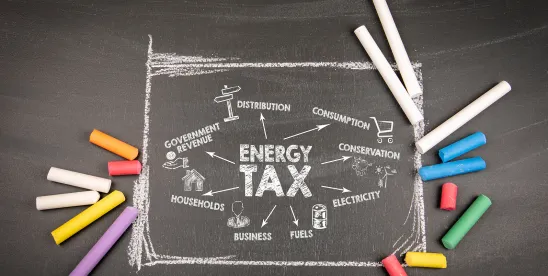Proposed tax regulations to be released this year may clarify whether agricultural land contaminated with per- and polyfluoroalkyl substances (PFAS) qualify for a federal tax credit that would incentivize renewable energy projects on contaminated land.
Recently, the Treasury Department’s (Treasury) Office of Tax Policy and the IRS released their third quarter update to the 2023-2024 Priority Guidance Plan, containing 234 Treasury and IRS guidance projects (the Guidance Plan). Under the Guidance Plan, Treasury and IRS are prioritizing the promulgation of regulations addressing the “energy community bonus credit” of the Inflation Reduction Act of 2022 (IRA).
As discussed in this firm alert, the IRA was a $400 billion tax and economic incentives package designed not just to lower energy costs and combat climate change, but to support and revitalize communities impacted by the fossil fuel industry and brownfield sites, generally referred to as “energy communities.”
The question now is whether communities and property impacted by PFAS will be included in Treasury and IRS regulations on the energy community bonus credit. If PFAS-contaminated agricultural land were to be labelled as an “energy community” eligible for the bonus credit, renewable energy developers would be incentivized to purchase or lease PFAS-impacted land from farmers, bringing the land back into productive use.
PFAS Background
Known as “forever chemicals” due to their slow breakdown in the environment, PFAS is a group of thousands of widely used chemicals that are water, grease, fire, and oil resistant. In July 2024, the U.S. Environmental Protection Agency (EPA) designated two of the most widely used PFAS — perfluorooctanoic acid (PFOA) and perfluorooctanesulfonic acid (PFOS) — as hazardous substances under the Comprehensive Environmental Response, Compensation, and Liability Act (CERCLA), also known as “Superfund.”
Although PFAS contamination and its effects are emerging as nationwide issues, PFAS contamination on Maine farmland is particularly concerning due to Maine Department of Environmental Protection-licensed land spreading solid waste byproduct from septic systems, wastewater treatment plants, and industrial facilities in a state-led effort to reuse those biosolids as fertilizer. This licensed practice, which is now banned, left some farmers concerned that they are unable to farm their land because of potential PFAS contamination.
Overview of Energy Community Bonus Tax Credits
There is widespread hope, however, that the IRA can assist communities impacted by PFAS. The IRA brought significant tax incentives to the renewable energy industry by creating and expanding tax credits covering energy generation, sustainable fuels, manufacturing, clean vehicles, and others. One area that could support these PFAS-impacted communities is through the energy community bonus credit increase for the production and investment tax credits.
The current Guidance Plan provides three location-based categories to qualify as an energy community:
- Brownfield Category
- Statistical Area Category
- Coal Closure Category
If PFAS-impacted property were to be included as a qualifying energy community for the tax credit bonus, the Brownfield Category would be the most likely.
To qualify in the Brownfield Category, property must be “real property, the expansion, redevelopment, or reuse of which may be complicated by the presence or potential presence of a hazardous substance, pollutant, or contamination …” Moreover, the IRS provides a safe harbor to meet the Brownfield Category if a Phase I Environmental Site Assessment identifies the presence or potential presence of a hazardous substance, pollutant, or contaminant.
By including brownfield sites as part of the energy community definition, Treasury and IRS would incentivize energy project developers, investors, and financers — that may have otherwise constructed a qualified energy facility on non-contaminated land for a 30% tax credit (assuming other requirements are met) — to seek out PFAS-impacted land to increase that tax credit by the 10% bonus. This would create a willing market of buyers and tenants for farmers to sell or lease their PFAS-contaminated agricultural land, thus bringing land into productive use.
PFAS-Impacted Communities
The Guidance Plan does not currently address whether PFAS-impacted property would meet the Brownfield Category requirements to be considered an energy community. But the Plan suggests that if Treasury and IRS further define and clarify energy communities to include PFAS-impacted property, then those properties would qualify for the bonus tax credit, thereby supporting farmers and landowners impacted by PFAS.
Moreover, while state energy policy generally provides tax incentives for biofuels, renewable chemicals, and other small-scale, climate friendly investments in homes, business, and transportation (as well as a recent Maine law that fast-tracks the permitting process for solar facilities built on PFAS-impacted land), they do not provide tax or economic incentives to build renewable energy facilities on land impacted by PFAS.
Whether at the state or federal level, providing tax and economic incentives that encourage the revitalization and constructive reuse of PFAS-impacted land would not only diversify and secure New England’s energy infrastructure but provide welcome relief to farmers and landowners impacted by PFAS.






 />i
/>i

